This type of feature requires a closed profile defining the area that a section will be removed from the active body.
This task shows you how to create a cutout.
-
Click the Cutout icon
 .
.
The Cutout dialog box is displayed.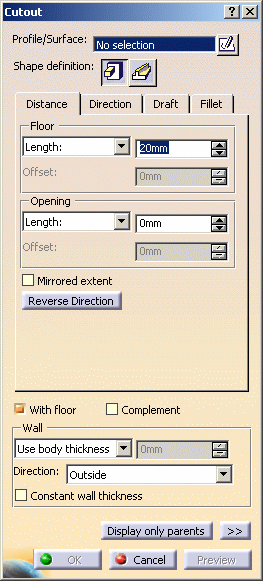
-
Select Sketch.1 as the closed profile on which you are going to base the cutout. If no profile is defined, clicking the Sketcher
 icon enables you to sketch the profile you need.
icon enables you to sketch the profile you need.If you are not satisfied with the profile you selected, note that you can:
-
click the Profile/Surface field again and select another sketch.
-
use any of these creation contextual commands available from the Profile/Surface field:
-
Go to profile definition. See Using the Sub-elements of a sketch.
-
Create Sketch: launches the Sketcher after selecting any plane, and lets you sketch the profile you need as explained in the Sketcher User's Guide.
-
Create Join: joins surfaces or curves. See Joining Surfaces or Curves.
-
Create Extract: generates separate elements from non-connex sub-elements. See Extracting Geometry.
-
The prism is the default shape. Just click the sweep
 icon if you want to change. For the purposes of our scenario, keep the
default option.
icon if you want to change. For the purposes of our scenario, keep the
default option.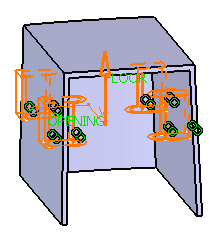
-
-
Set the parameters and options as follows to define the shape as explained in Prism (or Sweep) page.
-
In the Distance tab, enter 17mm to define Floor: Length.
Instead of using the Length option, you can set the Through All option, which sets the value of the cutout length as zero. This extends the cutout infinitely from the profile plane in the specified direction. Because the cutout is a protected volume, the infinite volume is also protected. When this option is checked, the Length value field is not available.
Preview of the Through All option defined for the Floor
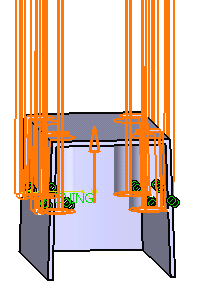
Opening: Length=0mm
Here again, instead of using the Length option, you can set the Through option, which sets the value of the cutout depth as zero.
-
In the Direction tab
Normal to profile option checked
-
In the Draft tab
Angle=1deg
-
In the Fillet tab
All fillet options unchecked.
-
-
Click Preview to get an idea of what the cutout looks like. As a protected area, it is displayed in red:
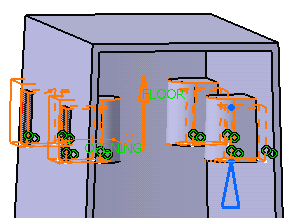
-
Uncheck the With floor option to see the difference. As indicated by the cursor, the cutout has no floor.
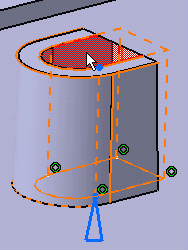
-
Check the With floor option to create a floor.
Complement
Checking the Complement option cuts away what is outside the profile rather than what is inside the profile, thus creating a complementary (or inverse) cutout, as shown in the following image:
Cutout Complement
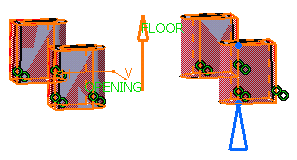
Wall
To define the wall, you can set one of the two options available from the Type drop down list:
-
Use body thickness: the cutout wall thickness is that of the active shelled body thickness.
-
Enter thickness: simply enter the value you want. After this option is selected, the value field becomes available. Wall thickness values can only by positive values.
You can control whether the wall is constructed inside or outside of the selected profile. The default is an outside wall thickness.
-
-
For the purposes of our scenario, set the Enter thickness option and enter 2mm in the Thickness value field.
-
Click OK to confirm and create the cutout. Cutout.X is added to the specification tree in the Solid Functional Set.X node.
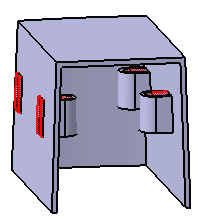
With floor |